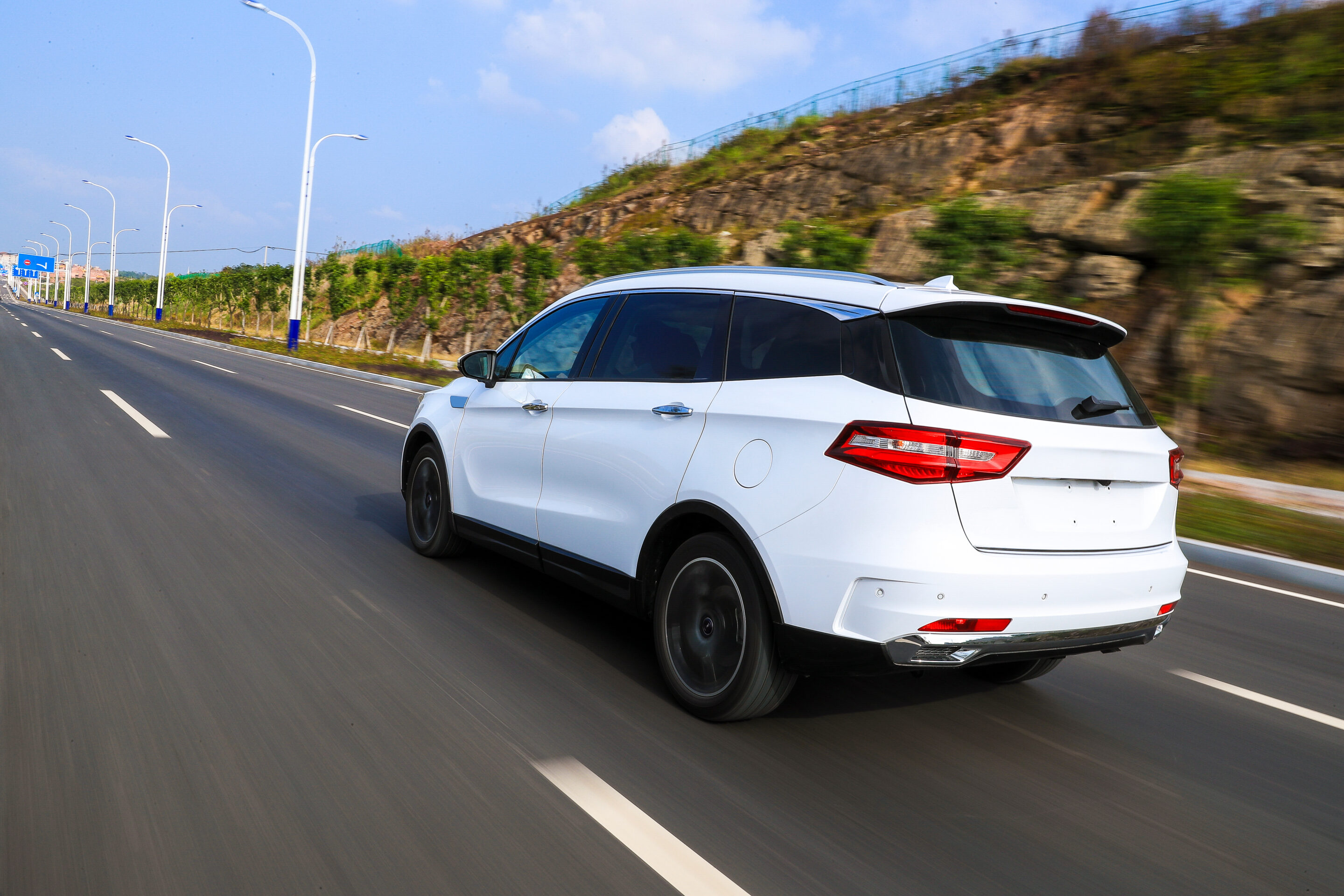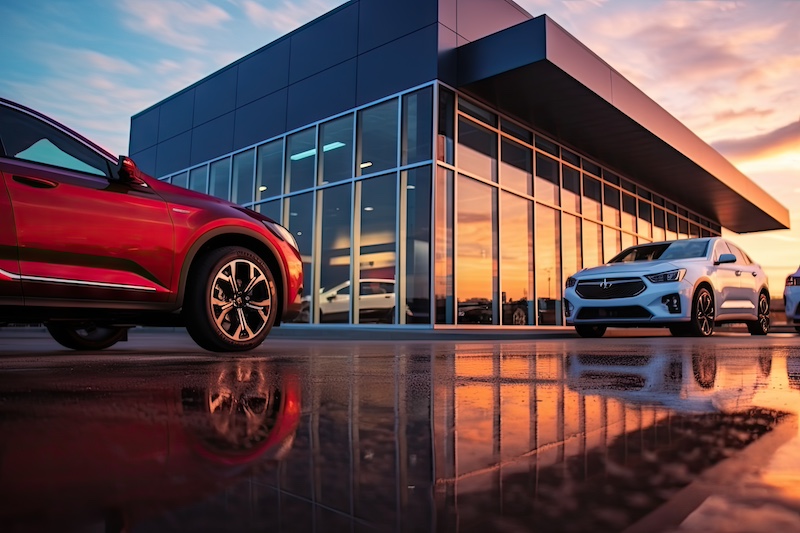Every piece of software I’ve ever designed is built around my belief in the resiliency of the middleman.
With each technological boom, from the industrial age, through the dot com boom, the middle man has faced and overcome existential threats. Casualties exist; however, middlemen remain, because they add value to the supplier and smooth the purchase process for the end buyer. I believe what we are experiencing now, the “Age of Amazonification,” will be no exception. Middlemen will thrive if they continue to prove themselves nimble, adaptive, and connected with buyers. But I am very concerned about auto dealers.
The Race to Be “More Like Amazon”
Having worked with thousands of auto dealers and most of the major auto manufacturers, I can’t help but think that the auto industry is blindly stumbling into a trap of its own making. In the race to adapt to changing consumer expectations in the Age of Amazonification, the solution across auto dealerships is to be “more like Amazon.” On paper, it makes sense – for example, digital retailing solutions now allow you to buy a car without stepping foot in a dealership. That’s great.
But if you look at the seeds of disruption, at a Netflix or an Uber, you see they start by making an incremental improvement to an experience. Netflix exploited Blockbuster making money off late fees to introduce a “no late fee” model that gave them the customer acquisition to upend the video store. Uber made improvements to the taxi experience by showing you where your car was and removing the awkward pay as you exit experience. The ultimate output in both situations? One or two sellers. There are not thousands of online video streaming subscription services. There are not endless ride-sharing apps.
It’s common knowledge that the car buying experience is not traditionally considered a pleasant endeavor; however, up until relatively recently, it was still a relationship sale. But in racing to respond to the changing consumer, auto dealerships have failed to prop up their people, and have unnecessarily left themselves exposed to potential disruption. The modifications that auto dealerships are making to their processes have discounted the relationship behind the sale. I would argue this is a short-sighted mistake.
Ten years ago, auto dealership inventory was still poorly represented online. This made the salesperson the information conduit. As websites and inventory display have improved, the buyer no longer feels compelled to visit multiple dealerships in person, (hence, the most overused stat in automotive presentations that the average consumer now visits 1.2 dealerships when buying a vehicle) and can reasonably do their shopping and decision-making online. This is all good for the consumer. Dealerships, however, have failed to equip their sales staff for this changing environment and are now coddling inefficient, underequipped sales teams.
While the physical showroom has mostly moved online, the auto sales stuff is still stuck in 1999. In 2019, a salesperson must make significantly more calls, emails, and texts to reach the same number of consumers. As a result, dealerships are struggling with record salesperson turnover as salespeople are being asked to do a job that feels fruitless and ineffective – hardly anyone wants to talk to them anymore. Logically, dealerships are embracing their own Amazonification because they are intoxicated by the idea of a slimmed down staff and the increased profits.
The problem with this is the closer the dealer is to being “more like Amazon,” the easier they are to disrupt. Amazon is a lot better at being like Amazon than the auto dealership. Big tech can spring up an Amazon-like business model faster and more efficiently than an auto dealership can without the baggage of a bloated business model. In a world where cars are sold online, there will not be thousands of dealerships. Period.
Contributing to the blindness of the auto dealership is the fact that a clear disruptor has not yet emerged. Carvana is doing interesting things, but they are refining their business model in 100% used vehicles (which is smart). Dealerships feel protected by legislation, powerful special interests and franchise agreements; however, as we saw with Uber and taxis, these protections only last until it makes sense to get rid of them. It will make sense when a disruptor emerges.
Think what you will about the car dealership, but I believe if auto dealerships die, we will usher in a scary economic time America is not ready for. Dealerships provide good jobs in every town in the country, service their communities, and more importantly, have employed multiple generations of people who have significantly less career mobility than other sectors. If auto dealerships go away, the pain will be felt across every community in the country.
But It’s Not Too Late.
I don’t believe it’s too late for the dealership, but I believe they must act quickly and efficiently. The consumer is correct to want a better car buying experience, but the dealership is incorrect in assuming that negates the need for good old-fashioned relationship building. The middlemen in automotive will prove nimble and adaptable if dealers lean in and do everything possible to empower a positive, productive relationship between the buyer and their dealership. It’s ok to be more like Amazon but they should also be rushing to be more like their local hardware stores. Be more local, more rooted in the community, keep building relationships.
I have a lot to say on what dealerships can be doing differently, but I will provide you a shortened list of guidelines:
1. LEAN INTO BUILDING TRADITIONAL SALES SKILLS.
Almost every time I speak, I ask dealers to raise their hand if they have someone in their lot who outsells almost everyone and can’t log a lead in the CRM to save their life. Every hand in the room goes up. The essence of this person is they know how to sell, or more specifically, how to relationship build. Train your people on this skill. Traditional sales skills are currently undervalued in our marketplace but behind every great dealer is great salespeople.
2. TAKE BACK THE HUMAN TO HUMAN RELATIONSHIP.
Every potential customer touchpoint is a chance for you to differentiate yourself. I’m going to pick on chat as an example but there are many other examples in the modern dealership. I think services such as Gubagoo and CarNow play a vital role in taking on a task that dealers haven’t been staffed up or equipped to do well. Fix that. Train your people to be chat wizards. The close rate on chats is still below that of sales calls and forms and it does not have to be that way. Chats (where people provide real contact info) should close equal to or greater than forms.
Both Gubagoo and CarNow offer you the ability to run the chat yourselves. Do it. Find employees that can be funny, engaging and real (with a little bit of that old-fashioned sales training). People who chat with your dealership should be excited to come in and meet you.
3. LEVERAGE YOUR ONLINE SHOWROOM (YOUR WEBSITE) TO INFORM YOUR SALESPEOPLE ACTIVITIES.
This has been the core of our Foureyes product development: Make sure that salespeople are following up with the people who are hitting your website. Take it a step further and communicate directly to the consumer and warm up leads more efficiently than your sales staff with inventory-specific, user-specific emails. Leverage this efficiency to direct your sales teams to the high value, higher closing sales leads.
4. EVALUATE YOUR RELATIONSHIP TO AI & MACHINE LEARNING.
We love AI and use it ourselves in parceling out the real sales prospects from all the phone calls, forms and chats a dealer receives and in building individual vehicle of interests for a consumer; however, AI needs to be used for targeted work.
• Right places: Making people smarter. Managing repetitive tasks.
• Wrong places: Situations requiring empathy. Scenarios where new problems emerge.
Remember that the value in the middleman comes from smoothing out the process for buyers.
5. SALES PROCESS, INVENTORY, THEN MARKETING.
Automotive sales is a three-legged stool: marketing, sales process, and inventory. Dealers focus a lot on marketing and inventory but more often than not, sales process goes by the wayside. Sales process is messy. It’s hard to measure. It requires constant training and problem solving. It’s worth it. Sales process improvements reduce buyer frustration and improve dealership profitability.
6. DISRUPT YOUR OWN EXPERIENCE.
Understand that you can be and need to be better. Disrupt your own organization before someone else does it for you. If you need a lesson in how to manage this process, I learned this incredible exercise a few years ago for ways to find quick, creative, and disruptive wins to build a better customer experience.
Don’t miss David Steinberg’s session at the Digital Dealer 26 Conference & Expo where he will share more adjustments and nuanced changes that can be made within your sales process to move your dealership to the next level.








